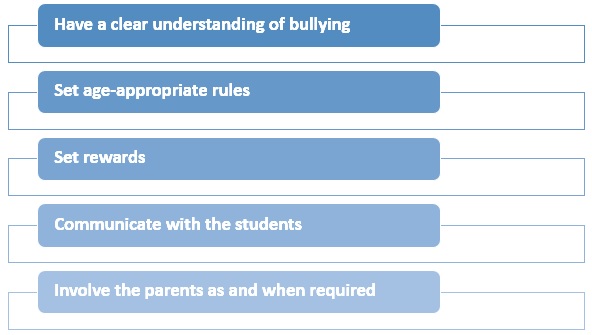Bullying is a common concern that has been haunting the sector of education and educational management since the beginning of time. School leaders and teachers from different corners of the world have been scrambling to locate measures that can help prevent bullying in their respective institutes. Whilst there has been some progress, there is still plenty of room for improvement and development. Bullying is the act of mentally, physically, or verbally abusing a learner, and can take numerous forms. It can range from alienating a student from friend groups to physically injuring one. The extent to which bullying can unfold is absolutely significant, and catering to this crisis is of massive importance. Indeed, an education management and leadership course always cover the topic of bullying and how it can be prevented as bullying can physically and mentally harm a child to the level that their entire childhood and growth potential can be perturbed. Here are some of the fundamental measures that can be applied to contain and eventually eliminate bullying in schools:

- Have a clear understanding of bullying: As mentioned before, bullying tends to involve a range of activities, and what might appear bullying to one person might seem like normal behaviour to another individual. Therefore, school leaders and managers need to establish a clear definition of bullying and highlight almost all the possible activities that can represent bullying. It is worth noting that bullying does not necessarily have to be an apparent act of alienation or beating someone. It can be implicit and hidden. In fact, a relatively tiny action that may appear seemingly unimportant to the teacher may still have a large impact on the kid’s life. That said, placing a firm grip on what bullying essentially means is vital for school leaders and teachers, and is something that an education management and leadership course will certainly include.
- Set age-appropriate rules: That’s right. If you want your institute to be bullying-free, you need to establish a range of rules that must be abided by all the students. These rules should be meticulously designed on the basis of the common bullying situations that can arise, and separate rules must be determined for different grades. Importantly, these rules must be clearly communicated via large posters, be printed on the students’ workbooks, or hand out brochures. Simple and firm language must be used to ensure that the students understand the rules, and also realise that they must be strictly followed. Additionally, teachers must take the effort to talk about these rules and explain them through intelligible examples and answer questions to clarify doubts.
- Set rewards: Rewarding the students who are following the rules with patience and consistency can act as a source of motivation for them to continue following the rules. This can eventually prevent bullying as a reward-driven culture is established wherein all the students are motivated and compliant. Besides, these rewards must be something that the students value, and should also be age-appropriate. For example, a free movie-pass to a 15-year old will be more valuable than rewarding him/her with blue stars on a classroom chart paper.
- Communicate with the students: Communication is the ultimate healer. If you notice that the students are feeling low or are behaving in a different manner, then setting some time aside and openly communicating with them is very important. In fact, this will render confidence as the student will feel that the teacher values her/his problems. These sessions can unveil bullying issues that the teacher was perhaps unaware of, and they can then take steps accordingly.
- Involve the parents as and when required: After interacting with a kid facing issues in the school, the teacher must first consult the other teachers and see if the issue can be resolved. If it appears that informing and involving the parents is important then the teacher needs to schedule an appointment with the child’s parents and share the concerns in as much details as possible. Indeed, parents often play a crucial role in helping students who have been suffering from spates of bullying in the school.
These are some of the useful ways to tackle bullying, but you can find a greater variety of actions and measures in an education management and leadership course. School leaders and managers need to have a very firm comprehension of how to handling bullying because not doing so will affect the students’ progress, and can disrupt their academic, social, and personal lives in the long run. Extreme bullying can often spur scary outcomes so nipping the bud and eradicating bullying in the institute’s culture is extremely important.









